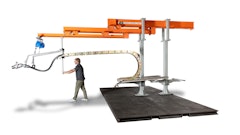In 2011, the oldest of the Baby Boomers will turn 65, marking a turning point in corporate America. As the 76 million Baby Boomers begin to leave the workforce, the United States will experience the most dramatic economic and demographic changes in its history. For the first time ever, we are facing a mass retirement movement. Companies must begin planning and preparing for the transition now.
At first glance, the impending Baby Boomer exodus may seem of little concern to companies. After all, people have been retiring from the workplace for ages. However, leaders need to keep in mind that the upcoming retirement years are going to be larger scale than in any other time in our country's history.
With 76 million Baby Boomers leaving the workforce and only 46 million Generation Xers available to take the roles, there's a deficit of 30 million workers. And while the Millennials (Gen. Y) number at approximately the 100 million mark, the oldest of them are too young and inexperienced to step into leadership roles.
Think about your company. How will you handle the transition, groom your Gen. X workers for leadership roles, transfer the wisdom and experience to your younger workers, and keep your company successful and running smoothly with a deficit of workers?
All companies need to harness the young leadership already in their company so that the Baby Boomer exodus has as little impact as possible on the organization. Use the following tips for a smoother transition period.
- Know what you're up against: Find out as soon as possible how this mass retirement will affect your company. Find out your workplace demographics. How many Baby Boomers are currently working in the company, what are their positions, and what are their anticipated retirement dates?
- Develop a knowledge transfer strategy: Most companies have policy manuals that detail each position's job requirements. While such a policy manual is a good start for grooming younger workers, it's not enough. You can only document so much of the day-to-day activities. Plus, there are subtleties of every job, things you do because experience and knowledge point you in a certain direction. That's why you need to develop a system for transferring the knowledge and skills of the older workers to the younger successors.
- Mentor the younger workers: As part of the knowledge transfer strategy, companies need to implement some sort of mentoring program. For a company to have a successful transition, the younger generation needs to work side-by-side with the older workers for some time. If you know that a key person is going to be retiring in three years, have that person start mentoring a younger worker now. The Gen. X workers who receive this long-term mentoring will feel more valued and be more likely to stay with the company long-term.
- Retain older workers: Realize that just because someone turns 65 doesn't mean they want to retire that day. Many of your older workers will want to stay in the workforce in some sort of capacity, either by choice or by necessity. Since many Boomers worked hard to put kids through college or are currently taking care of aging parents, they still need to work well past age 65 just to make ends meet. Your older workers may be open to staying onboard on a part-time basis or as a consultant. Since they often want to pursue other interests at this stage of their life, being chained down to a 9 to 5 desk job won't appeal to them. The more flexibility you offer, the more likely they'll be to stick around as a resource for the company.
- Put a strong management team in place: For your company to get through this transitional period, you need strong management and leadership — someone who can empower and motivate both generations to be open-minded and to learn from each other. You need a leader with expertise, not only in your industry, but also in people skills.
A successful transition for all
Because the unemployment rate is high due to the current economy, companies can draw from that pool of workers to help fill the gap the Boomers will be leaving. But since no one can predict the country's economic future, no one can rely on this fix for the long haul.
The coming years will be a challenge for companies; the smart ones will take a proactive approach and start addressing the issue now.
ABOUT THE AUTHOR
Anne Houlihan is president of Satori Seal, Rancho Cucamonga, CA, and is founder of Elevated Leadership Intl., where she helps companies improve management techniques, empower employees to be decision-makers, bridge the generational gap and overcome adversity. For more info, visit www.elevatedleadership.com.


















